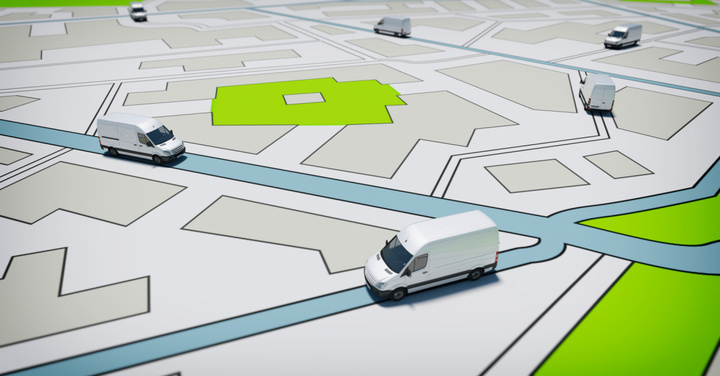Technology for transportation visibility is typically associated with answering the question, “Where is my freight?” The location tracking of shipments in transit is often the first place to start for shippers looking to increase visibility. Not only does it offer the benefits of managing freight in transit, but this type of real-time visibility also assists with supply chain planning. For shippers of goods like fresh produce that have specific requirements in transit, visibility solutions help to ensure shipments are handled appropriately and that future freight decisions support the goals of delivering on time and in perfect condition.
This article looks at transportation visibility—its benefits, challenges, and how the right approach helps increase supply chain agility and flexibility.
What Does it Mean to Have Transportation Visibility?
Real-time transportation visibility is essentially having better access to data from carriers to fill in the gap in visibility between when a shipment is picked up to when it is delivered. This data is given to the system or platform a shipper uses for their transportation management. With this data, the system can calculate ETAs—used by operations—and other valuable information using predictive analytics that can contribute to planning—by adjusting future execution based on historical data. In both cases (execution and planning), transportation visibility allows the shipper to increase their supply chain agility and flexibility.
Agility in execution is a matter of having real-time visibility data available to respond quickly as needed. If there is a delay, the downstream components of the supply chain must be informed to adapt. Agility within planning is the same concept on a bigger scale—all other parts of the chain must have the latest metrics to know how to tune planning for better efficiency. Effectively, transportation visibility provides data as a feedback loop, giving shippers the necessary information to make adjustments.
The Challenges of Limited Transportation Visibility
Without real-time supply chain visibility, shippers are left to manually address their needs for this feedback loop, and they will likely run into the following challenges.
- Limited real-time visibility – Shippers are limited to only the information they seek out by communicating with their carriers or logistics providers, resulting in limited visibility and data latency.
- Inconsistent data quality – Data may be recorded differently by different individuals or teams. This can make it difficult to ensure data accuracy and reliability.
- Inability to scale – Without visibility solutions, manual processes require more work if the number of shipments were to increase.
- Difficulty integrating with other systems – Manual processes to access shipment data do not automatically integrate with other systems, like inventory management or order tracking. This makes it a challenge to streamline logistics and make data-driven decisions efficiently.
The Benefits of Real-Time Transportation Visibility
While agility and flexibility are the main generalizations of the benefits of real-time visibility, they are realized as the following results.
- Save time internally– Real-time visibility is intrinsically supported by technology and automation, which means shippers can access data updates in real time without time-consuming processes.
- Increase efficiency – With greater insight from transportation visibility, shippers can make decisions that better align planning to what is needed while reducing costs and wasted resources.
- Improve risk management – Shippers can proactively identify potential disruptions or delays and take action to prevent or minimize their impact.
- Improve customer service – With real-time data, shippers can provide updates to their customers that allow them to respond as they need, helping shippers maintain customer satisfaction.
How Transportation Visibility Further Enables Supply Chain Agility
In addition to the operational and planning-related benefits of transportation visibility, shippers also gain the advantages of utilizing emerging technologies, building robust infrastructure, and ensuring data quality, further contributing to supply chain agility and flexibility. Visibility solutions provide support for standardizing and managing data, and shippers can apply the latest logistics technologies to benefit their supply chain decisions and operational efficiency—technology like IoT sensors and devices and predictive analytics. In this way, visibility solutions serve as the foundation on which streamlining capabilities can continue to build.
Increase Agility with HWY Haul’s Real-Time Visibility Data
Real-time transportation visibility plays a critical role in improving supply chain agility and flexibility. By providing a feedback loop of information for shippers, real-time data helps them make informed decisions that better align their planning, increase efficiency, improve risk management, and provide better customer service.
As a digital freight platform designed for shipping transparency, HWY HAUL offers visibility on everything from the location and condition of goods during transit to data analytics. Applied to fresh produce shipping that HWY Haul specializes in, we’re working to reduce food waste and the waste of time and resources that shippers encounter without transportation visibility.
For more about HWY Haul and increasing your real-time visibility in logistics, reach out to us today to learn more.
